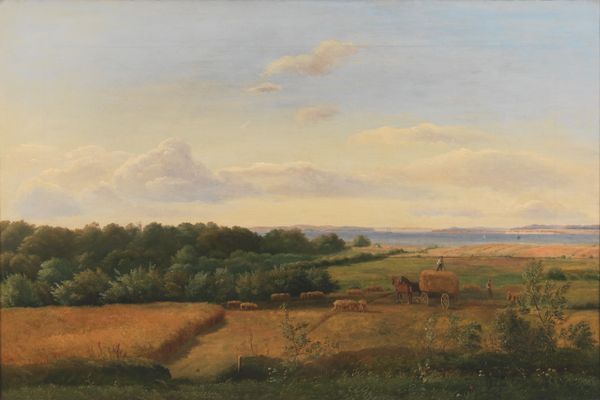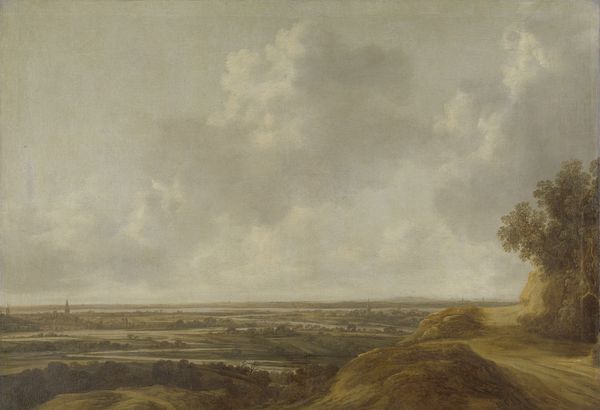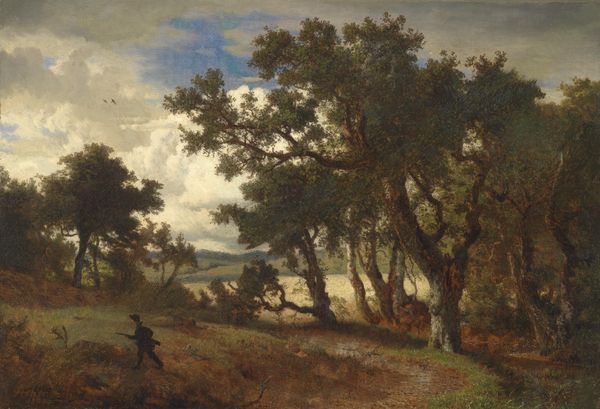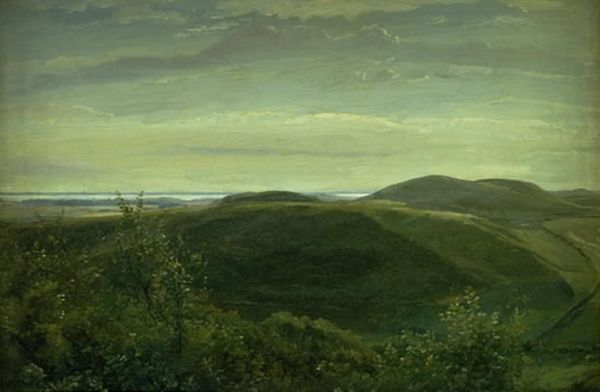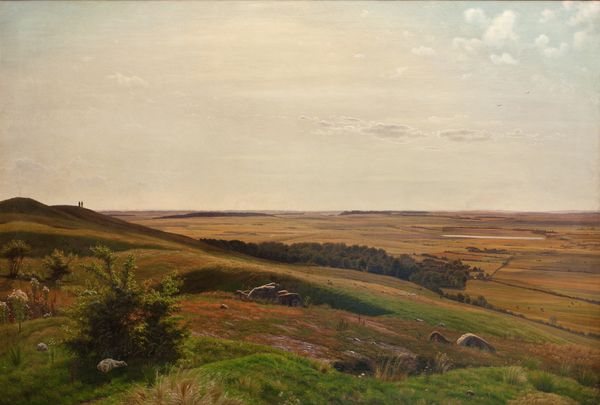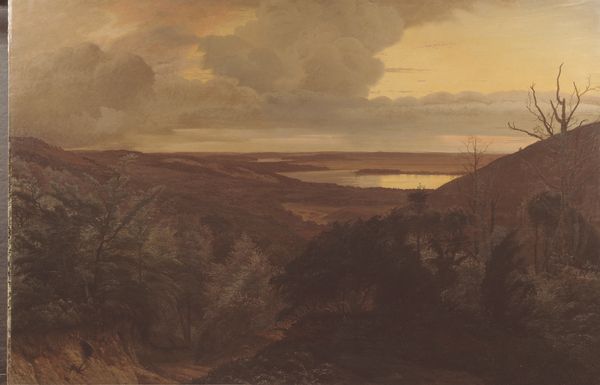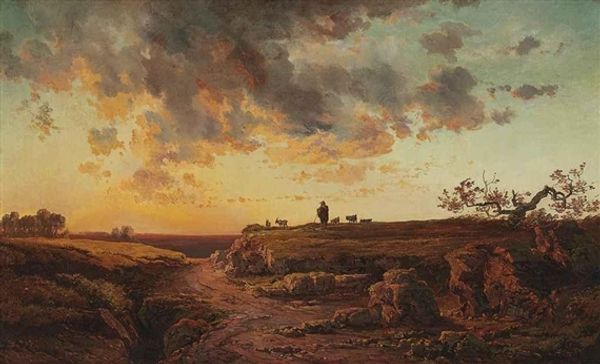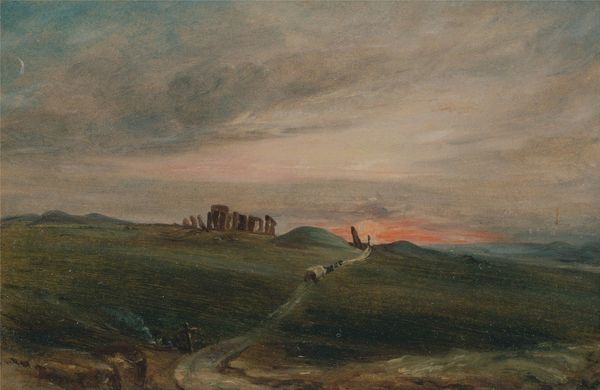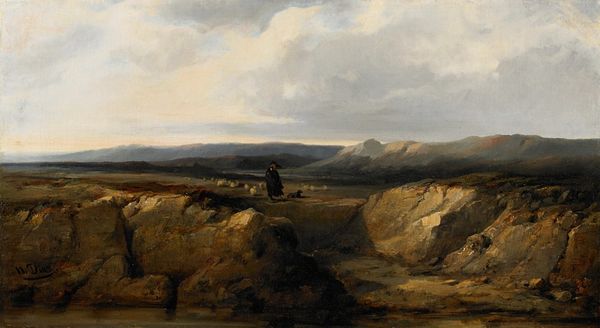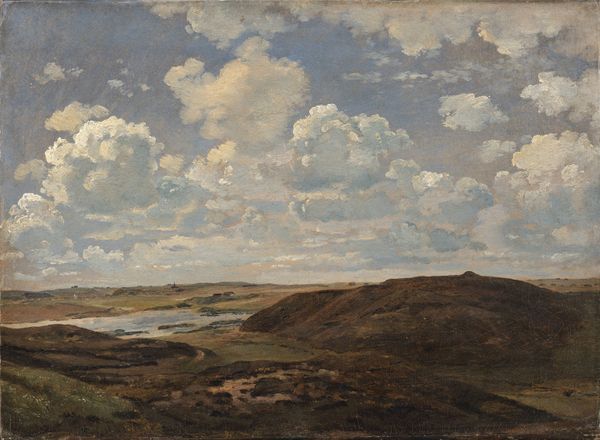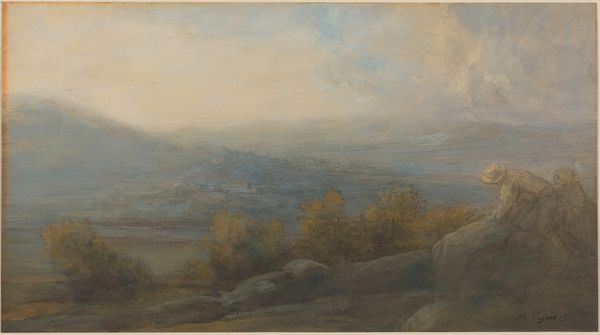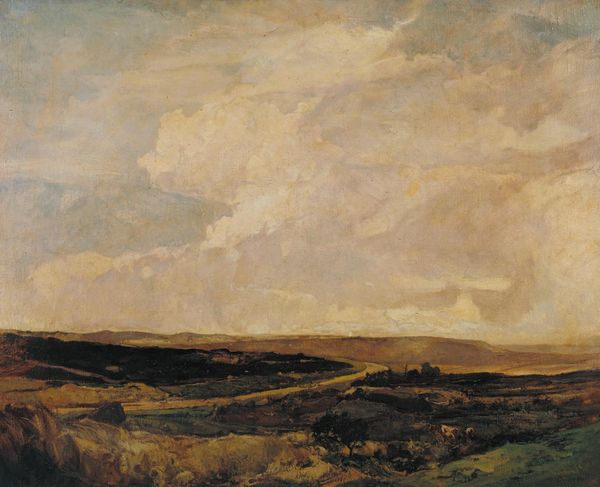
The Coast of Jutland Seen from Mølleknap Hills in Funen 1847 - 1848
0:00
0:00
canvas
#
abstract painting
#
charcoal drawing
#
possibly oil pastel
#
charcoal art
#
oil painting
#
canvas
#
underpainting
#
seascape
#
watercolour illustration
#
watercolor
#
shadow overcast
Dimensions: 91.5 cm (height) x 122.5 cm (width) (Netto), 103.4 cm (height) x 134.5 cm (width) x 11.5 cm (depth) (Brutto)
Curator: Let’s turn our attention to Dankvart Dreyer’s "The Coast of Jutland Seen from Mølleknap Hills in Funen," painted between 1847 and 1848. It is currently held in the collection of the SMK, the National Gallery of Denmark. Editor: What strikes me first is its earthiness. The tones are muted, browns and greens dominate, which imbues the landscape with a tangible weight, a kind of stoic presence. You can almost smell the damp soil and feel the rough texture of the hills. Curator: Yes, and notice how Dreyer uses light to convey a deeper meaning. The light drapes over the landscape, enhancing its symbolic gravity; the rolling hills could evoke a sense of journey, each mound potentially representing challenges overcome or yet to face. Editor: Considering the time it was made, I'm curious about the pigments used to achieve these earth tones, and where they were sourced. Were these locally available materials, anchoring the image geographically, or were they more costly imports, revealing Denmark’s place in wider trade networks? Curator: An interesting consideration! One could suggest these muted colors are representative of a certain romantic ideal, turning away from brighter colors often associated with more decadent art of previous eras. The choice communicates a more austere appreciation for the natural landscape, mirroring the values of the time. Editor: Perhaps, but I also think about the labor that goes into creating the canvas itself, priming it, and then layering the paint. These are not simply images created in a flash; they’re built through time and process. You see signs of a human presence throughout, and I find that thought deeply grounding. Curator: It makes us think about what the symbol of the land represents for different groups of people, the material workers who live off it versus, the elites who own it, say. The land ties people to it whether literally through labor or abstractly as their sense of belonging and heritage. Editor: Absolutely. Understanding the material conditions allows us to decipher the layers of meaning encoded in seemingly simple landscapes like this. It makes you realize art's inherent connection to labor, consumption, and our ongoing relationship with the environment. Curator: Ultimately, reflecting on Dreyer’s work underscores the depth imbued within visual landscape representations, linking not only geographical space but emotional and national identity through symbolism. Editor: Indeed. Investigating an artwork, and understanding how it's made can unveil the complex economic, ecological, and social forces embedded in seemingly simple objects.
Comments
No comments
Be the first to comment and join the conversation on the ultimate creative platform.
